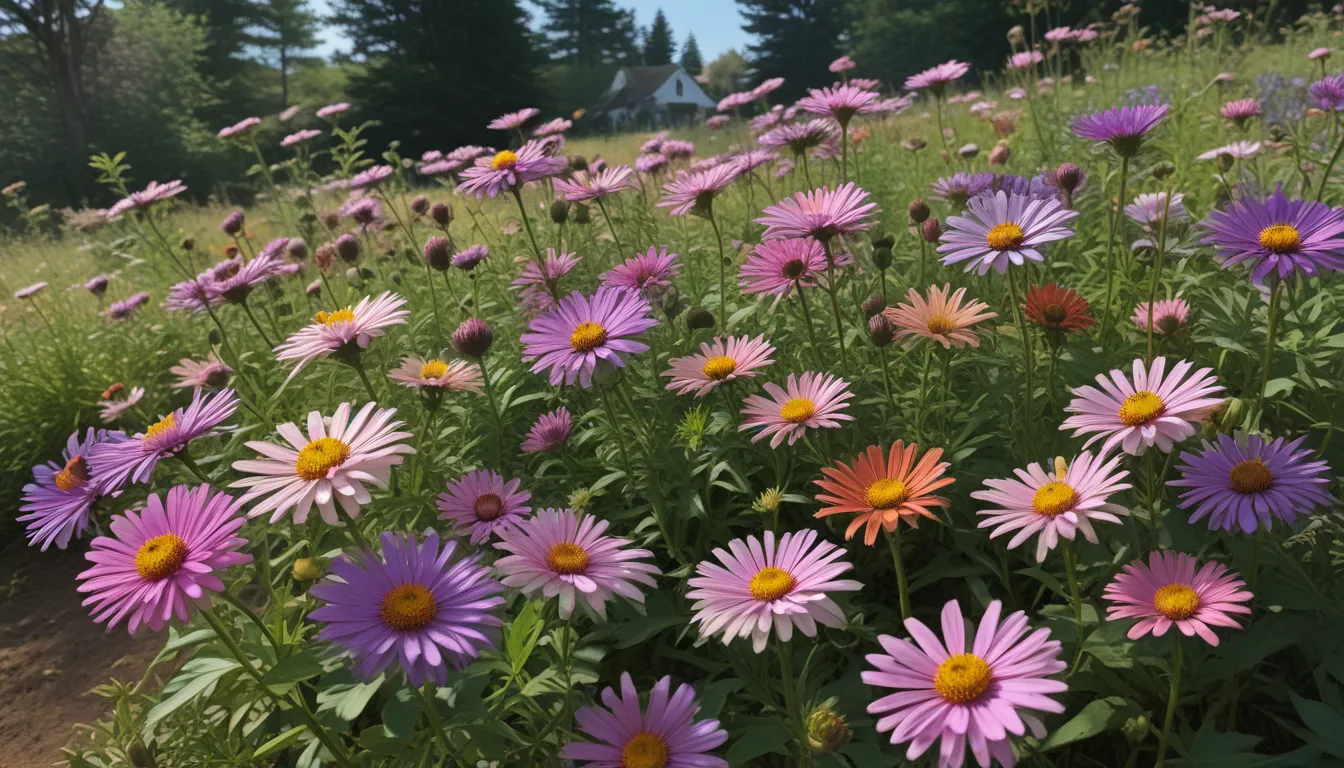How to Grow New England Asters for Spectacular Summer and Fall Color

New England aster, also known as Michaelmas daisy or Symphyotrichum novae-angliae, is a vibrant perennial flower from the Asteraceae family that adds a burst of color to your garden throughout the summer and fall months. This nectar-rich plant is native to the US and attracts beneficial pollinators like butterflies and bees with its vivid violet blue, pink, purple, or white blossoms.
In this comprehensive guide, we will delve into the cultivation, history, propagation, growing tips, pruning, maintenance, cultivar selection, pest management, and best uses for New England asters. By the end of this article, you will be equipped with the knowledge and tools to cultivate these stunning flowers in your garden successfully.
What You’ll Learn:
- Cultivation and History
- Propagation
- How to Grow
- Growing Tips
- Pruning and Maintenance
- Cultivars to Select
- Managing Pests and Disease
- Best Uses
- Quick Reference Growing Guide
Cultivation and History
The rich history of New England asters dates back to their use in herbal medicine and purification rituals. The plant’s common name, Michaelmas daisy, is inspired by the feast of St. Michael on September 29, coinciding with the plant’s peak blooming period. Introduced to Europe in the 1700s, New England asters found their way back to the US as cultivated varieties with more compact growth habits.
Botanical species of New England aster can reach towering heights of six feet, while modern cultivars offer more manageable heights of around three feet. The plant’s characteristic hairy foliage and conical clusters of daisy-like blooms make it a standout addition to any garden.
New England Aster Plant Propagation
Propagation of New England asters can be achieved through three methods: seed propagation, stem cuttings, and division. While seeds from botanical species will yield clones, seeds from cultivated varieties may not produce identical offspring.
- From Seed: Start seeds indoors before the last frost date or sow directly in the garden after the frost has passed.
- From Stem Cuttings: Take soft stem cuttings in the spring or early summer to propagate new plants.
- By Division: Divide existing plants to create new ones by cutting through the roots and replanting.
Each propagation method offers a unique opportunity to expand your New England aster collection and enjoy a variety of cultivars.
How to Grow New England Aster Flowers
To cultivate New England asters successfully, ensure they are planted in a location with full sun to partial shade and organically rich, well-draining soil. Conduct a soil test to determine the acidity level and amend the soil accordingly. Plant seeds or transplants at appropriate intervals and maintain even moisture until established.
- Growing Tips:
- Allow ample space for naturalizing.
- Enrich the soil for optimal nutrient uptake.
- Ensure proper drainage to inhibit root rot.
- Maintain even moisture during the first growing season.
- Keep an eye on flowering patterns for troubleshooting.
Caring for New England asters is relatively straightforward, making them an excellent addition to any garden landscape.
Pruning and Maintenance
Regular pruning and maintenance are essential for healthy New England asters. Fertilize plants in the spring, divide overcrowded plants, thin stems for airflow, and stake tall varieties as needed. Keep an eye out for pests like lace bugs, cucumber beetles, and spider mites, as well as common diseases like fusarium wilt and powdery mildew.
Regular weeding, watering, and monitoring for pests and diseases will help ensure your New England asters thrive throughout the growing season.
New England Aster Cultivars to Select
Choose from a wide range of New England aster cultivars to suit your garden needs. From compact varieties like ‘Purple Dome’ to vibrant options like ‘Andenken an Alma Pötschke,’ there’s a cultivar for every garden style. Select native varieties for a showy display or experiment with hybrid options for unique colors and blooms.
Exploring different cultivars allows you to customize your garden and create stunning visual displays with New England asters.
Managing Pests and Disease
As a native species, New England asters have developed natural defenses against pests and diseases. However, occasional infestations may occur. Keep an eye out for common pests like lace bugs and spider mites, and be prepared to address any issues promptly.
Regular monitoring, proactive treatment, and good garden practices will help keep your New England asters healthy and vibrant throughout the growing season.
Best Uses for New England Aster Flowers
New England asters are incredibly versatile and can be used in a variety of garden settings. Plant them in mass plantings for bold splashes of color, along fences for hedgerows, or as back-of-bed anchors for summer flower displays. Smaller cultivars are ideal for container plantings or front entry accents, providing a pop of color as summer transitions to fall.
Explore different ways to incorporate New England asters into your garden design and enjoy their stunning blooms and wildlife-attracting properties.
Turn Up the Color
Add a burst of color to your garden with New England asters and enjoy vibrant displays from summer through fall. Whether planted en masse in meadows or used as cut flowers for fall arrangements, these versatile plants are sure to brighten up your landscape.
By following the guidelines outlined in this comprehensive guide, you can cultivate healthy, vibrant New England asters and enjoy their colorful blooms for years to come.
Now, it’s your turn to bring the beauty of New England asters to your garden and create a vibrant, pollinator-friendly landscape that will delight you and your visitors.
What vibrant colors will you incorporate into your garden this year? Let us know in the comments below, and happy gardening!
Disclaimer: This article contains information sourced from reputable sources and is intended as an educational guide for gardeners. Always follow best practices for plant care and consult with experts if needed.
Keywords: New England Asters, Gardening, Plant Propagation, Cultivar Selection, Pest Management, Garden Maintenance





